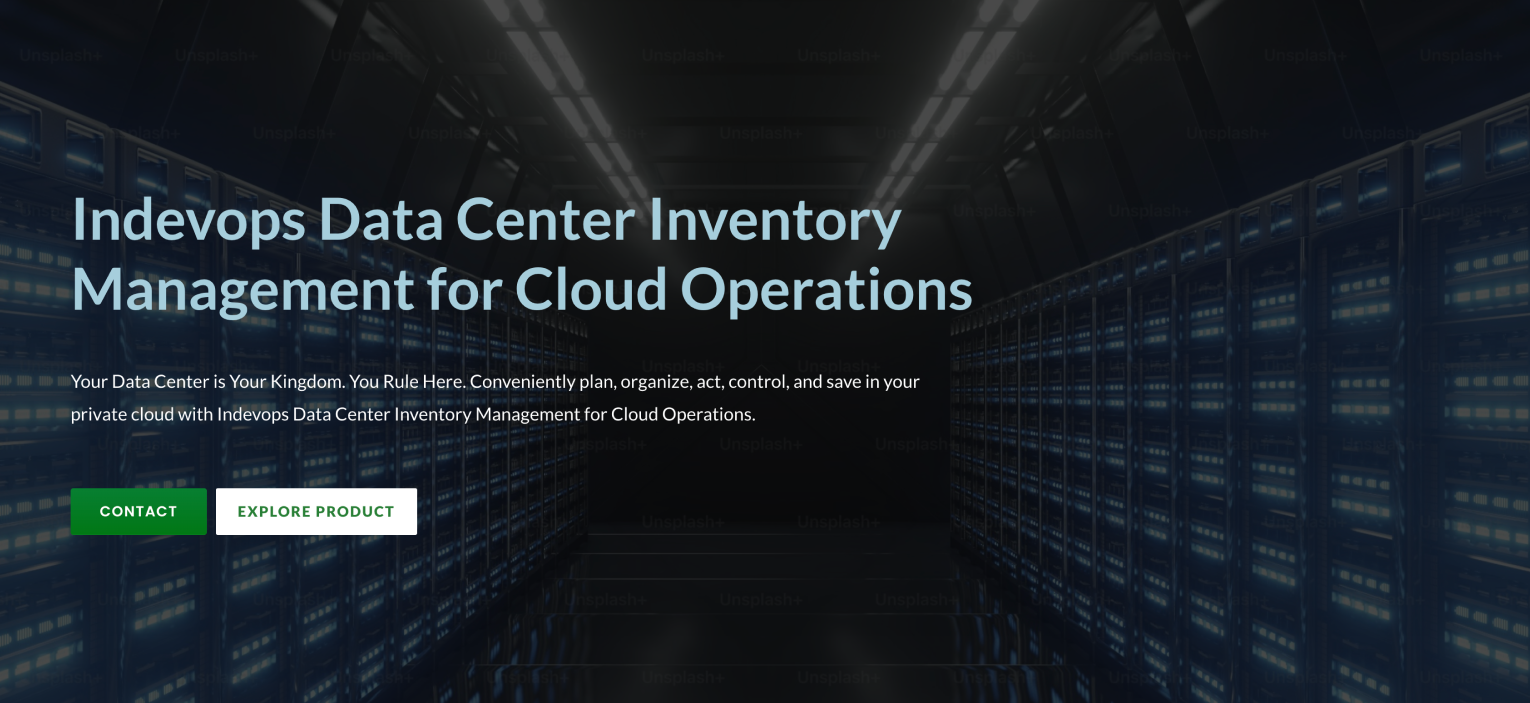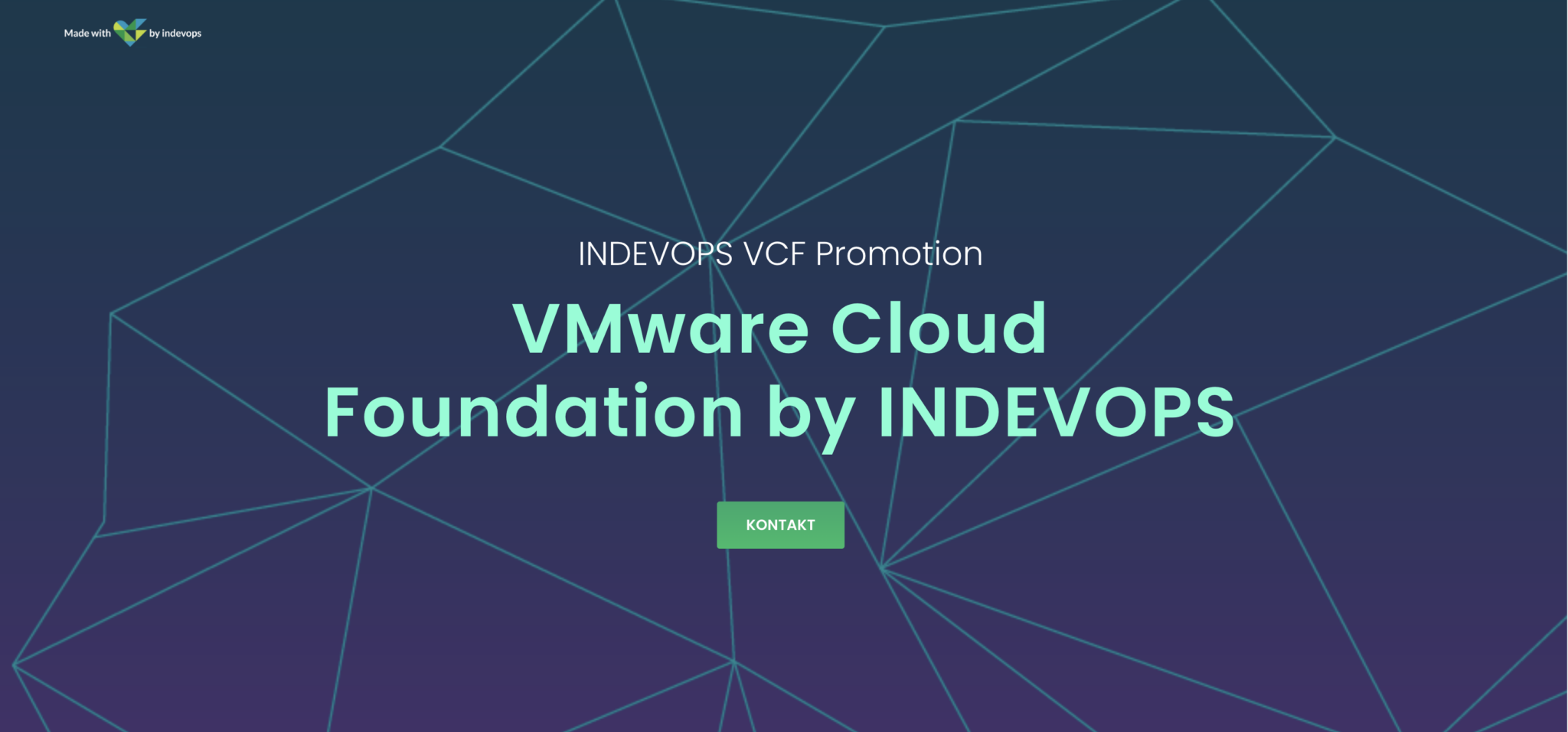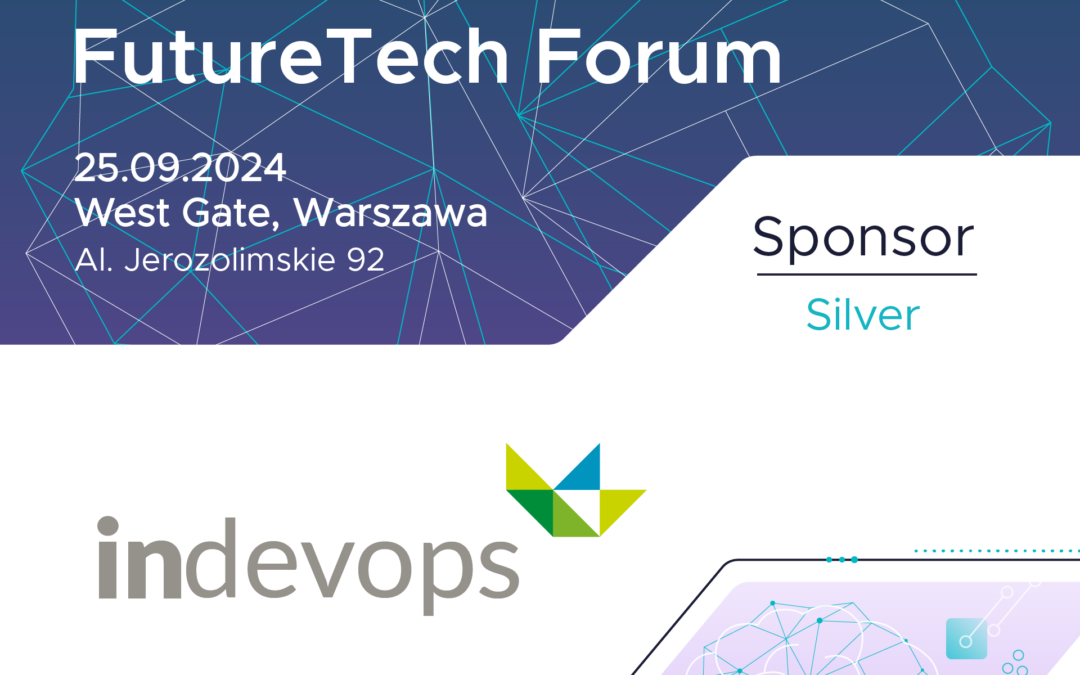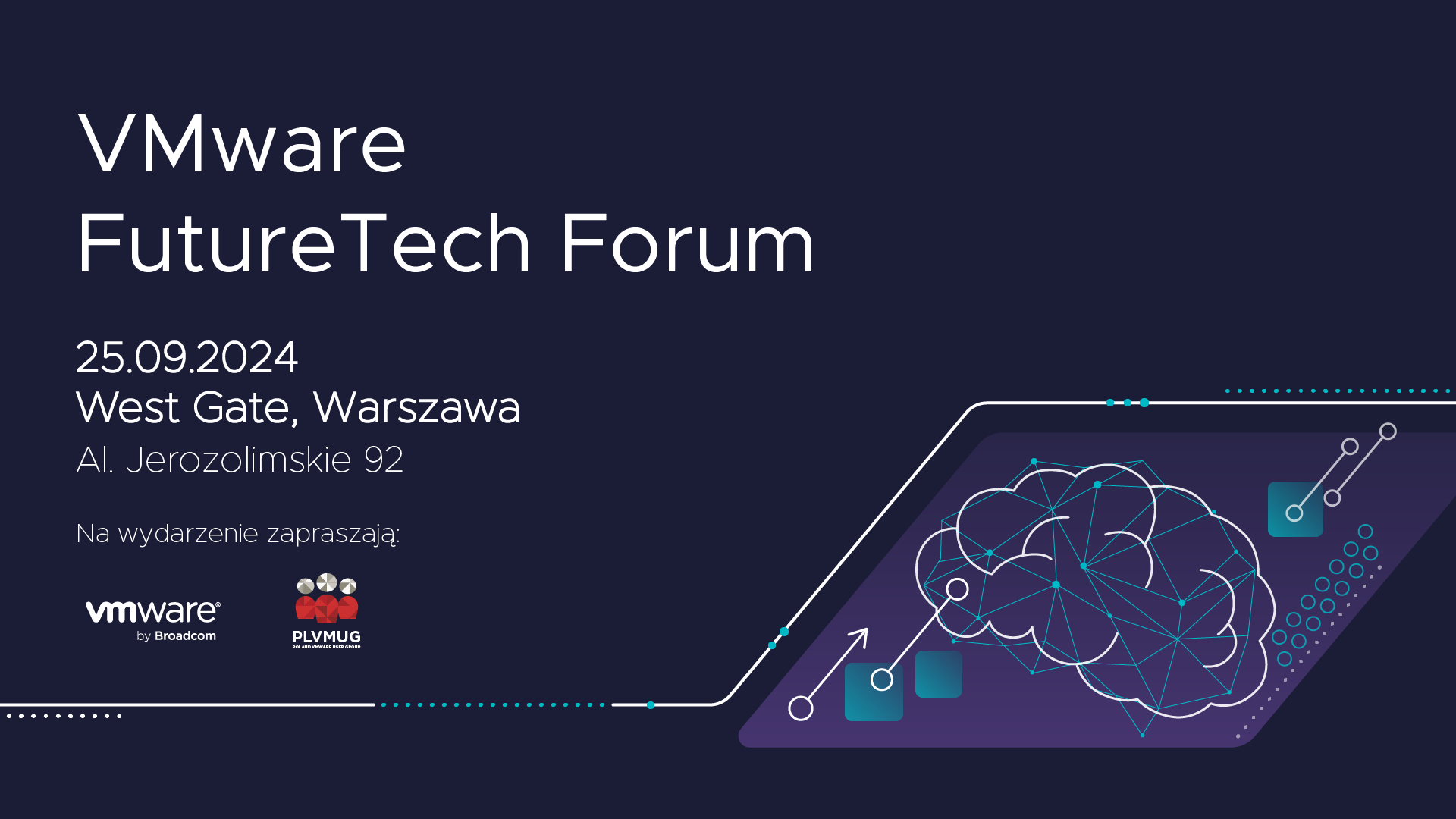It’s great! It’s great, so what’s it all about?! 😎
As we all know the acquisition of VMware by Broadcom has become a reality. It’s been rumored on the web for a long time, and now the rumble is even bigger. New facts came out: new packages, new prices, no more licenses, subscriptions, add-ons…(more on that in a moment).
I’ve been reading various publications on the subject, foreign and Polish, and I haven’t come across any purely positive article (except for Vmware’s blog). In general, everyone writes that prices are higher, that they “went overboard”, that it caused 💣 😉 . When information about benefits appears, it’s the kind that appeals to me on average: “greater development outlay”, “faster time to value”, “predictable investment”. Overall, the tone is strongly neutral. Even AI concludes “Customers need to weigh all the pros and cons.” 😜
In addition to the reviews, there is also a rash of all kinds of competitive announcements like „hey, as you know there’ve been some changes in VMware, and here we have this interesting extra solution that replaces it”, even from Vmware partners(!).
The Policy of Truth 🙃
On the web you will find information about how the price list or an explanation of the simplification is now, so I will not go into detail here. I would like to present my own truth. In our context and that of the clients we serve.
Simply “simple”
Well, finally there is an end to combinations with licenses, grasping at straws, which took “days” (several months) of analyzing, determining, adding and subtracting. From my point of view, it was some kind of massacre. I have a certain client (still a potential one) who, for the past three years, has approached me from time to time: “how about such a variant, how about such a variant, how about per CPU, how about a subscription.”. And I, like a fool, threw everything and reminded myself what was there, what could be, whether it is current, whether prices have changed. In January he came forward and …. declared that he would finally have orchestration for the whole environment, and the price with a discount was better than what was prepared for him the last time.
Now it’s simple and straight to the point: you take it or you dont. If you took it, then maybe you could still add Add-On: 1, 2 and 3. Of course, the price may come out (I do not write “comes out”) higher, but how many additional out of the box functionalities you may have.
Of course, it can come out more expensive, but it doesn’t have to, as the example above shows. And from our tests it even comes out that the higher package, can be cheaper than the lower package.
New functionalities
And this is where the people from the first part of the post respond: “but why do I need it, I don’t need it”. And I reply, “Well you do need it, and do you know why? No? Well, listen, newbie” 😜.
Everything is monitored
The topic of monitoring in IT is as old as the IT world. How many of you have gone through “X” monitoring systems? And how many of you have “Y” monitoring systems? Or do you have one system (in terms of its manufacturer), but its seven instances? 🤔
Now in each subscription package you get an advanced monitoring system that will handle your entire environment. Well, three systems 🙂 but:
· efficiently exchanging information with each other (integrated)
· complementary to each other (metrics, logs, flows)
· true “combos” (functionality and scalability)
· covering the entire IT stack in the datacenter (branches too)
But how? Well:
· In the lower suite (VMware vSphere Foundation) you have tools to monitor hardware metrics, i.e.: servers, arrays, network switches, control panels, air conditioners (yes, yes, about that in a moment) and events from the entire IT stack
· metrics monitoring – Aria Operations (formerly vRealize Operations Manager)
· log monitoring – Aria Operation for Logs (formerly vRealize Log Insight)
· in the higher suite (VMware Cloud Foundation) there are database and application metrics, i.e. for example Oracle, MySql, MSSQL, application interiors (yes, yes about that also in a moment), as well as network analysis
· additional functionalities in the aforementioned software
· network monitoring – Aria Operation for Networks (formerly vRealize Network Insight)
Where is my opinion coming from? Because we’ve been implementing and maintaining these software products for more than 6 years, we’ve already developed a practice to make it happen quickly and efficiently, and to make it fit organizations of all sizes, to have everything from hardware to applications visible in one place, along with business services, infrastructure layers, both for customers as service providers, applications or cloud infrastructure and resources. You get your hands on really valuable tools.
What makes monitoring software from VMware’s stable stand out? This is obviously a text for a separate article ). I think we will publish something more soon.
Orchestration aka Automation
How much time do you spend on configuration per day or per month? Such daily clicking in the GUI of basic things, mundane issuance of VM’s, copying data between systems, setting up accounts in different systems, etc. You could mention many examples here. And you don’t even know how many errors and “misconfigurations” will happen to you during these activities. 🙂
Orchestration, interchangeably called Automation, associated with the buzzwords Infrastructure as Code, GitOps, CI/CD and even confused with RPA, comes to the rescue in such situations. An important advantage of automation, besides the fact that it standardizes, speeds up processes, improves security, introduces compliance, is learning! 🙂 Because it requires a person not to write code, but to think about how the process should look, what should happen, in what order, etc. And there is also another asset: collaboration!!! 🙂 Because orchestration makes not only systems work together, but also people. 🙂
In the second subscription package you get the full-featured VMare Aria Automation orchestration tool. Full-featured because we have been using it for 6 years and we know it inside out. Moreover, we have recently compared orchestration tools from various leading manufacturers for one client, and Aria holds the level (by the way, they all came out comparably). Nevertheless, price-wise, considering that Aria Automation is now with everything else, it is second to none.
More about automation-orchestration in the next VMware podcast soon. How about publishing the aforementioned comparison?
Other: Security, Storage and Containers
We also have other pieces in this puzzle that give us security, agility, learning:
- software definded networkig, or NSX with all aspects of easier network management and security
- software definded storage, or vSAN, or the elimination of disk arrays (oh, here I hear the noise of discontent 😜)
- containerized applications, i.e. Tanzu Kubernetes (a lot could be written here)
And what’s next?
INDEVOPS as a VMware Premier Partner
We were one of several companies in Poland to receive this status. There are 2 more companies with international coverage at Strategic level.
I am very proud, because it was deserved by the whole team, whose work, dedication, energy, translates into the trust of customers, as well as our partner VMware already “by Broadcom.” 🙇 We, Indevops, such a small bunch of people, who there in the recess of the garage, was patting configurations. Local business, which is trusted by the giants of the Polish market. A COMPANY that has always put the customer first, that has gone the extra mile to make sure the CUSTOMER has the best. We want to thank the VMware Poland team for this award. We thank you dear customers for your trust. “We are here to serve you”.
Maybe this message should be at the beginning 😉 Well, no, because I don’t like to eulogize. But the intention of the post was to show the positive benefits of the VMware changes. I hope I managed to breathe that positivity into all of you.
So?
You don’t start a sentence with “so” 😜
Look at changes positively. Because there is nothing more constant in life than changes 🙂 Fight for discounts at VMware. We will do your implementations, maintain your environment. We’ll think together how to make you, and us, and even VMware, happy 🙂 We’re all in the same boat.
Are you having trouble with pricing, overpricing, deployment, maintenance? Let’s talk. We are waiting for you with open hands.
Good luck 🙂
Sample sources:
- „Reset” VMware’a w relacjach z Dellem, HP, Lenovo i in.
- „Broadcom zrzucił na nas bombę, nie wiedząc, co będzie dalej” – twierdzi dyrektor.
- Przejęcie VMware przez Broadcom, nowe zasady licencjonowania, subskrypcja i koniec licencji dożywotnich.
- Broadcom halves subscription price for VMware’s flagship hybrid cloud suite.
- Also kills perpetual licenses, adds a vSphere bundle for smaller users.
- VMware by Broadcom Dramatically Simplifies Offer Lineup and Licensing Model.
- Broadcom ends VMware perpetual license sales, testing customers and partners.
- Already-purchased licenses can still be used but will eventually lose support.
AI analysis:
- Pros:
- Investment in innovation: Broadcom has pledged to increase VMware’s R&D investment by 20%. This could accelerate the development of existing VMware products and services, as well as lead to innovative new solutions. Greater investment may also accelerate the integration of VMware with Broadcom products, which could benefit customers using both platforms.
- Strengthening leadership position: The combination of VMware and Broadcom will create a powerful player in the virtualization and cloud market. This could provide customers with more choice and access to a wider range of solutions. The strengthened leadership position may also lead to greater stability and security of the VMware platform, which is important for companies that rely on it for their operations.
- Synergy and optimization: Broadcom has extensive experience in software and IT infrastructure. Combining this expertise with VMware’s experience can lead to synergies and optimization in various areas, such as:
- Developing new cloud solutions
- Streamlining infrastructure management
- Cost reduction
- Access to a wider range of solutions: Broadcom offers a wide range of IT solutions, including software for network, security and performance management. After the acquisition, VMware customers will have access to these solutions, which can help them improve their IT infrastructure.
- Growth opportunities for employees: The acquisition could create new growth opportunities for VMware employees. Broadcom is a large company with a global reach, which could mean more opportunities for advancement and professional development for VMware employees.
- Cons:
- Price increase: Broadcom has a reputation for seeking to maximize profits. There is concern that after the acquisition there may be price hikes in licenses for VMware products. This could negatively affect customers, who will have to pay more for the same products and services.
- Strategy and priorities change: There is concern that Broadcom may change VMware’s strategy and focus on areas other than those that are important to customers. This could lead to the neglect of VMware’s key products and services, negatively affecting customers.
- Impact on integration and compatibility: It is unclear how the acquisition will affect VMware’s integration with third-party products. There is a risk that integration could become more complicated, which could make it more difficult for customers to use different solutions.
Summing up:
The acquisition of VMware by Broadcom carries both potential benefits and risks. It is important for customers to carefully consider all aspects of this transaction before drawing any final conclusions.









